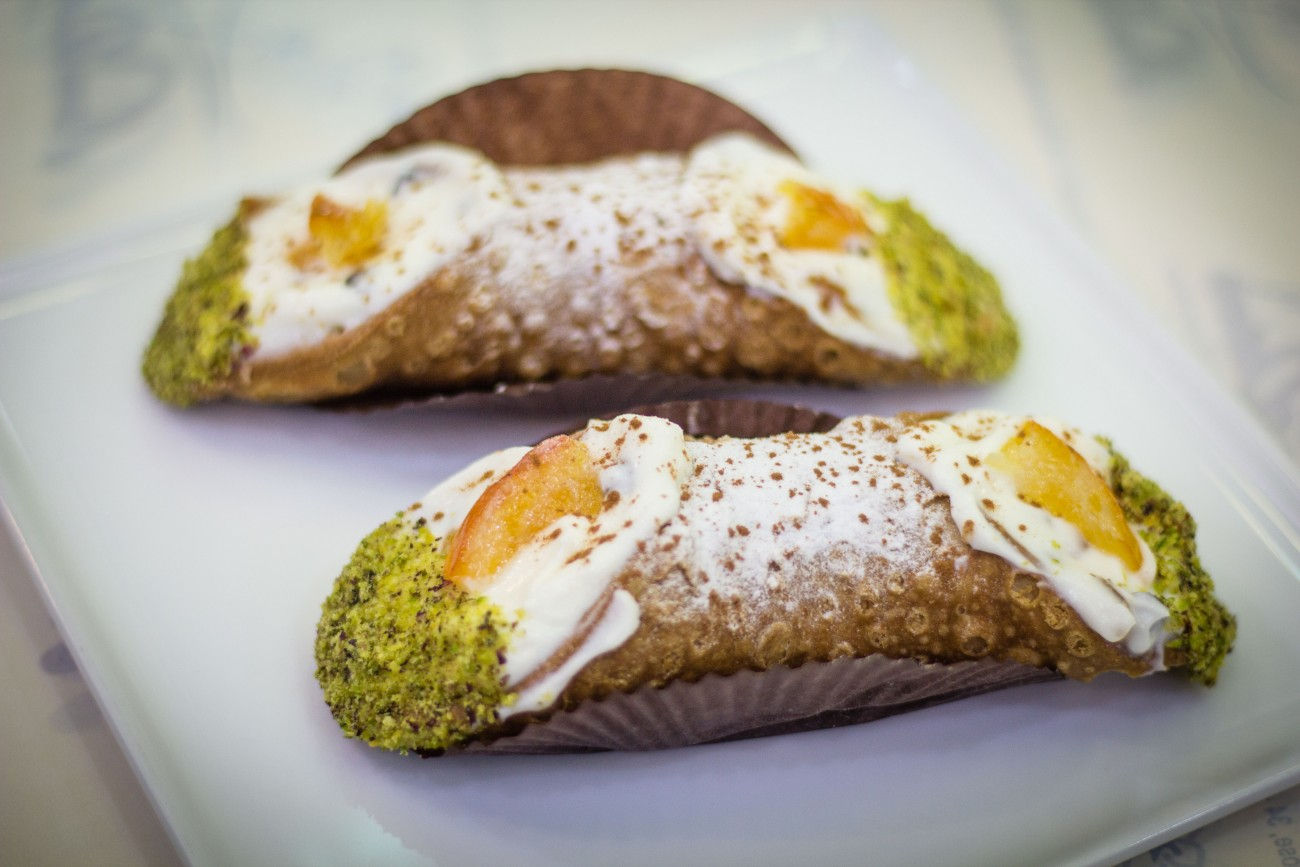Sicilian Style Cannoli
INGREDIENTS:
- 2 lb ricotta cheese, (preferably from sheep)
- 1 lb sugar
- milk to taste
- vanilla to taste
- cinnamon to taste
- 3 ½ oz mixed candied fruit, diced
- 3 ½ oz dark chocolate, chopped
- pistachio, reduced to grains
- confectioners sugar
- 7 oz all-purpose flour
- 1 oz cocoa powder
- 1 oz sugar
- 2 eggs
- ¾ oz butter
- salt to taste
- 1 tablespoonMarsala wine, or Rum
- lard, or frying olive oil to taste
PREPARATION:
To make the crispy wafers, mix together the flour, cocoa powder, melted butter and eggs in a bowl. Then add the Marsala, or if you prefer, the rum. Continue mixing until the dough is smooth, then wrap it in plastic wrap and let it rest for half an hour.
Roll out the cannoli dough and cut it into squares, about 4 inches per side. Then wrap the squares around the metal tubes to shape the cannoli. Fry the dough, still wrapped around the tubes, in a large pot of boiling lard or olive oil. Let the cannoli cool on paper towels. Once cool, slide out the metal tubes.
To make the ricotta-based filling, with a fork the ricotta and sugar, adding a bit of milk and a dash of vanilla extract and cinnamon. Pass the mixture through a sieve and blend in diced candied fruit and bits of dark chocolate.
Fill the crispy dough with the ricotta filling and sprinkle the crushed pistachio nuts over the ends. Sprinkle the outside with powdered sugar.
CHEF’S TIPS
The cannoli should be filled right before serving: after a few hours they tend to become soft and lose that nice crunchiness which is the main feature of this dessert’s deliciousness and attraction.
DID YOU KNOWN THAT…
The Sicilian cannolo is one of the most famous Italian sweets in the world. Contrary to what most people believe, these delicious ricotta-cream filled wafers have been around for a long, long time. During his time spent in Sicily as a Roman queastor, Cicero fell in love with a predecessor of the modern cannolo. He described the dessert as a tube stuffed with a sweet, milk-based filling.
According to some accounts, however, the creation of modern cannoli came as a result of the Arabs who once controlled Sicily. This satisfying sweet was likely created inside a Muslim harem in the city of Kalt El Nissa, modern-day Caltanissetta. In this harem, the women spent their time preparing this delicacy.
In fact, it may very well have been on of these women who modified a preexisting Arab dessert made with ricotta, almonds and honey to fit Cicero’s description. In doing so, she created what is now known throughout the world as Sicilian cannoli.

